You’ve probably read about the story of Goliath of Gath.
He was a giant Philistine warrior who was defeated by the young boy David, the future king of Israel.
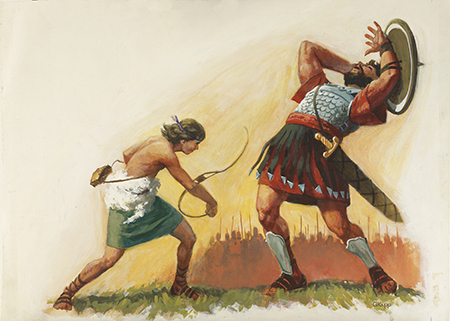
History has shown us time and time again that it’s possible to compete and win the big guys.
MySpace was once the biggest social media site in the world and the most visited in the United States. But it lost the social media battle to Facebook.
Today, MySpace is almost dead.
Yahoo was once the #1 search engine on the web. Google is now the undisputed search engine in the world.
Recently, Yahoo was sold to Verizon for $5 billion. Forbes called it the saddest deal in the tech history.
In fact, the story goes like this:
1998: YAHOO refused to acquire Google for $1 million.
2002: YAHOO realized its mistake and offered $3 billion. Google requested $5 billion. YAHOO refused.
2008: Microsoft offered 50B to acquire YAHOO. YAHOO rejected the offer.
2016: YAHOO has been acquired for $5 billion.
The current value of Google is around $545 billion.
No big company is safe.
You can compete and win.
(GrowthFunnel_Code)
Apple was once a garage shop that competed with the big guys like IBM and software giant Microsoft. It won!
Apple is the world’s most valuable brand today.
Some marketing and business strategies that will help your startup (David) compete and win your established and big competitors (Goliaths).
Go Niche. Expand Later.
Your established competitors are BIG.
Your startup is small. That’s the truth.
Here comes the biggest mistake most startup founders make:
They want to act big.
You shouldn’t act big because your capital and resources aren’t as much as that of your competitors.
But there’s a smart way to crush your big competitors:
Focus. Specialize. Niche.
These are the keys.
When Facebook started out, they didn’t compete directly with MySpace.
They didn’t act big like MySpace. They can’t.
Facebook acted small. Very small.
Back when it launched, it focused on Harvard students.
It captured Harvard.

Then it moved to other campuses until it has captured every one of them.
It all started from somewhere.
Remember:
Focus. Specialize. Niche.
Amazon is the world’s biggest online retailer with 74.1% market share.
But that wasn’t how it started.
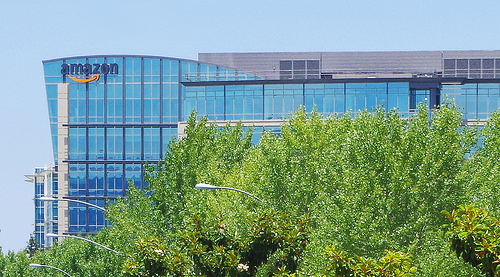
Amazon started as a bookstore.
Back in 1997, Barnes & Noble sued Amazon for claiming to be “the world’s biggest bookstore.”
Today, Amazon is the biggest online retailer.
That’s the power of starting from a niche. That’s the power of focus. That’s the power of specialization.
Selling a large number of different products will be a nightmare. You’ll be trying too hard to appear big when, in fact, you’re so small.
Save yourself the stress. You won’t win when you compete this way.
Compete smart.
Drop any product that doesn’t contribute to growth.
When Steve Jobs returned to Apple in 1997, the company was struggling and almost at the edge of collapsing.
Apple had 20+ product lines at the time.
Jobs cut that number to 4.
So Apple focused on 4 great products:
- A consumer desktop
- A consumer notebook
- A pro desktop
- And A pro notebook
He was proved right.
Apple turned profitable and went to become the most valuable brand in the world under Jobs’ leadership. That’s the power of going niche and focus.
Scott Gerber, the founder of Sizzle It! wrote on the Entrepreneur Magazine:
“In 2004, my partners and I launched a typical “do everything” video production company.
After years of under-performing, I transformed the company into a single product specialist.
While the vast majority of video production companies still tout their large service rosters, Sizzle it! has carved out a niche as the only company that specializes in sizzle reels–stylized 3-to-5 minute product videos commonly used by PR and marketing professionals.
Result; Sizzle It! has emerged as a go-to company for sizzle reels and benefits from top keyword visibility on all major search engines.”
There are thousands of T-Shirt stores both online and offline. But Threadless is different.
Threadless is a user-generated T-Shirt and apparel website that determines its product line based on the results of online design competitions.
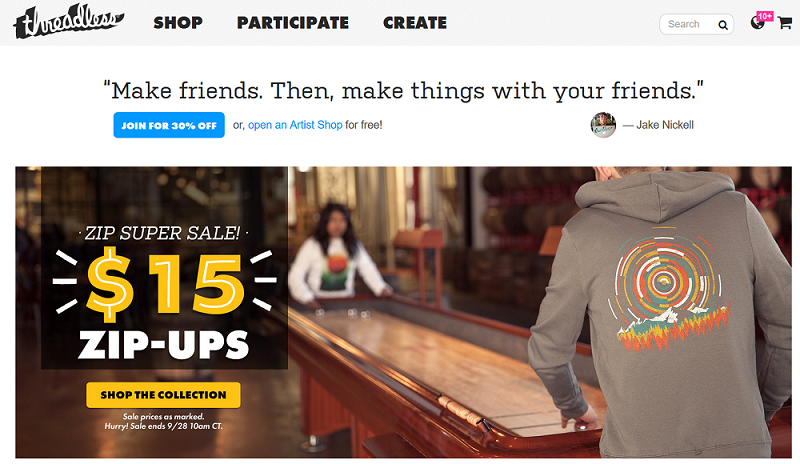
Though the management doesn’t disclose revenues, it was estimated that the company makes $30 million sales per year and a 30% profit margin.
In 2008, Threadless was featured on the cover of Inc. as “The Most Innovative Small Company in America.”
Being everything to everyone is impossible. You have to be one thing. Do one thing extremely well.
One thing the world could associate your startup with.
You can’t be all over the map claiming you do all things well. That will only hurt you more and give more power to the established companies.
Smaller is bigger in business. It’s highly focused. It gives you the chance to win against the bigger guys.
A niche is a targetable part of the market.
When you go niche, you’re a specialist providing a product or service that focuses on a specific need a group of individuals or companies have. Your big competitors shouldn’t be meeting that need.
If your big competitors are meeting that need, then it’s not a niche.
For example, Google is the world’s biggest search engine. It’s for everyone.
How about a search engine for kids?
That looks like a niche. This is just an example.
Creating a search engine for kids is a real challenge.
The point here is to differentiate yourself so small that your biggest competitors won’t feel like you’re taking the majority of their market share away.
Before they know it, you’ve already taken a big chunk that you’re almost ready to expand.
By then, they won’t see you as another small startup, but a real competitor.
Niche marketing is really easier.
Your positioning and branding will make attracting people easier.
People with similar interests behave the same way and are attracted to similar things. Your customers will be the one doing the majority of the marketing for you instead of the other way round.
Getting repeat business would also be easier because you can deliver a better product and service that’s based on the customer needs.
Build And Leverage Your Personal Brand
Your personal brand is how you sell when your product is completely unknown.
When you’ve worked hard to build a personal brand, it’ll lend trust and authority to any product and company you create.
For example, Ramit Sethi has worked hard for years to build his personal brand.

Today any product he creates sells fast.
It’s because people know him.
It’s because they trust him.
His online courses such as Earn1k, Zero To Launch, and the Fitelligent were all successful.
Building a personal brand is now more important than ever. It’s your key to driving growth for your small company.
In the early stages of your company, people are more interested in you than what your company has to offer them.
When you’ve built a personal brand, selling your product becomes easier.
It’ll also be easier to get other people on board to market your product.
It’s because you’ve built a relationship with them through your personal brand.
You may begin wondering what a personal brand is and why it’s really important?
Your personal brand is how others see you.
It’s important that people have a positive view of you.
In addition to that, the relationship you have with people is very important.
You should engage people on a personal level. That’s how you develop a great relationship with them.
Meet a lot of people.
Help a lot of people.
Share your knowledge and ideas with them.
The relationships you build through this will be valuable for your startup. It could mean going from point A to Point B.
It could mean getting that big client that will move your company up on the ladder.
You Have to Give to Receive
Are you ready to get massive customers for your company?
You have to give and help a lot of people.
Think about what you can offer others more than what you can get from them.
In his words, here’s how Sujan Patel is giving to promote his company:
“One of the first things I did was begin to host some dinners for marketers and entrepreneurs.
I simply wanted to get people together to share knowledge and ideas. I certainly had no intention of selling or pushing my products on them.
I made a point of holding these dinners in various locations around the world. The idea was that I would appear more successful than I was at the time, that I was jet-setting around the world for business meetings.
This was all part of the bigger building-a-brand-to-sell plan.”
So, start giving.
Start writing a lot of high-quality blog posts.
Start appearing on podcasts that will have you.
Start hosting dinners with professionals in your industries and those related.
Start offering one-on-one consultations with potential customers.
Start doing webinars. This can be highly rewarding for your startup.
Just continue helping people, and the selling part will naturally take care of itself.
When you create a lot of helpful contents online, people will start finding your website on search engines. This means another avenue to promote your company.
Content is the fuel of social media too.
Giving in the form of high-quality contents is a great way to gain an advantage over your established competitors.
When you apply this advice, you’ll find that your startup will succeed pretty much faster.
Have An Awesome Customer Service
Customer service is a brilliant way to compete with the big guys.
For example, Zappos built a billion-dollar empire on their ability to deliver an excellent customer service alone.
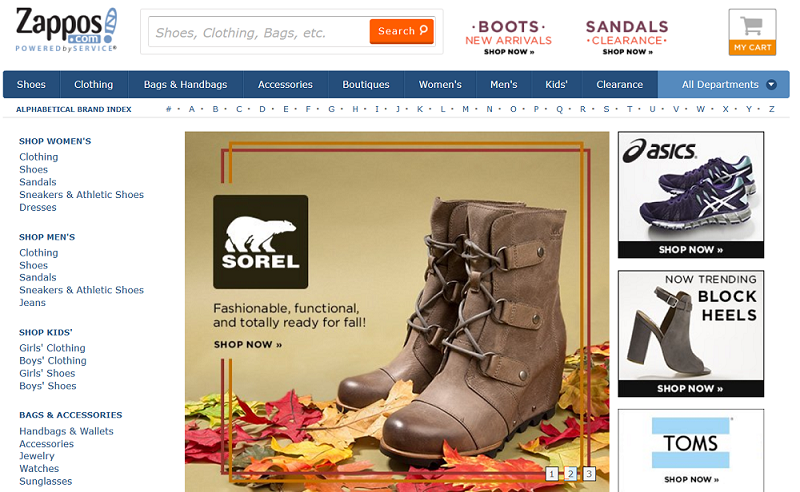
In fact, delivering an excellent customer service is Zappos main company values.
There are thousands of negative customer service stories on the web, but only a very few people (if they ever existed) can say a bad thing about Zappos.
Here’s one of the amazing statements coming directly from the CEO.
“We believe that the speed at which a customer receives an online purchase plays a very important role in how that customer thinks about shopping online again in the future, so at Zappos.com, we have put a lot of focus on making sure the items get delivered to our customers as quickly as possible.
In order to do that, we warehouse everything that we sell, and unlike most other online retailers, we don’t make an item available for sale unless it is physically present in our warehouse.” – Tony Hsieh, CEO of Zappos.com, Inc.
Speed is one of the keys to delivering an excellent customer service.
STELLAservice conducted a response time report in 2011 and found that the average email response time for the to 100 Internet companies was 17 hours.
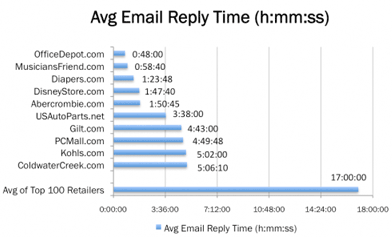
Frost reported that 41% of consumers surveyed listed being put on hold as their biggest frustration.
So make sure you don’t leave customers waiting.
No company is perfect. You’ll have some unsatisfied customers.
How you deal with tough customers can have a big negative or positive impact on your reputation.
Don’t be afraid to admit mistakes if the blame is on you.
And sometimes, the blame might be on the customer, but that doesn’t mean the customer is bad.
One unhappy customer can lead to 5 lost customers.
Even Amazon care about its customers.
“In 2007, an Amazon customer ordered a new PlayStation for his son for Christmas.
When the shipping company delivered the parcel, the customer was away and had a neighbor sign for the package.
The neighbor left the package outside the customer’s house (in which it soon disappeared).
When the customer realized what had happened, he was left in complete shock.
Even though Amazon was not to blame for this mistake, they were quick to resolve this by not only sending a new PlayStation in time for Christmas, but did not charge for the extra shipping.”
A recent survey found that 68% of consumers would react by telling family and friends about a bad experience by posting it on a social network.
And as each Facebook profile has an average of 229 friends, the reach of this experience can quickly reach thousands.
There is great value in ensuring you deliver a positive customer service.
RightNow Technologies 2011 Customer Experience Report found that 86% of U.S. adults are willing to pay more for a better customer experience and 73% of U.S. adults said a friendly customer service made them fall in love with a brand.
Not only will brands get happy, loyal customers but will see increased business.
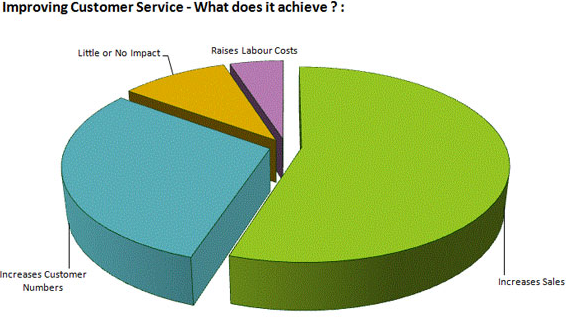
Improving your customer service is the key to competing with the big companies.
Can’t wait to win your big competitors?
Start applying these tips today.
Thanks for reading and please share this article with your friends on your favorite social network.

May be this a short length post, but the message it delivers is BIG. Focus on targeted niche may be a short group of people (Like Facebook did, not first targeted Myspace customers rather Harvard University) should be the first approach for any startups. Thanks for the inspiration and ideas man!
Don’t you think it’s next to impossible to beat Facebook, Twitter or LinkedIn ( if we want to build a brand new social media ) People couldn’t grab Google+ but they do like Google. I think there is a huge monopoly in this niche . New startups will not survive ( Facebook own the What’s up with a huge cash). So in the end, the Big fish will run the industry.
This is truly inspiring and motivating post for many youths like me and especially for those who are dilemma of creating something big while worrying about giants. As we all know it is never too late to start something. In this startups era, and neck tight competitive world as you mentioned in post, one should start with small, specialize and then expand. Really worth reading and made my day!
Thanks for the post, keep writing great stuff.
Mountnow, you are to be congratulated, great posts, good insights, great content creators.